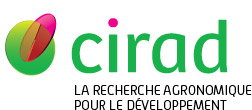Sraïri Mohamed Taher, Tourrand Jean-François, Chedid Mabelle, Opplert Marie, Maraval Marie-Cécile. 2025. Past, present and future challenges in mountain transhumance. Montpellier : CIRAD, 310 p. ISBN 978-2-87614-857-4
|
Version publiée
- Anglais
Sous licence  . .
613918.PDF Télécharger (24MB) | Prévisualisation |
Résumé : This book, through historical and forward-looking analysis carried out across various study sites by around fifty researchers and stakeholders involved in Mountain Transhumance, aims to anticipate the major changes and challenges facing this pastoral activity, in order to inform policymakers at the local, regional, national, and even global levels. The findings presented in this book are based on research conducted in the early 2020s across twenty case studies on four continents: Asia (Qilian Mountains in the northeast of the Tibetan Plateau, China; Kazakhstan; and Mount Lebanon), Africa (Green Mountains in Libya; Eastern Atlas in Algeria; High Atlas in Morocco; Tigray in northern Ethiopia; and Kamiesberg Mountains in South Africa), Americas (Canadian Rockies; Chimborazo Watershed in Ecuador; Cordillera Blanca and Altiplano in Peru; Malargüe and Southern Patagonian Andes in Argentina), and Europe (Serra da Estrela in Portugal; Cévennes and Upper Tarentaise/Alps in France; Pindos Mountains in Greece; Romania; and Scandinavian Alps in Norway). From a methodological standpoint, the research sought to combine approaches from the human and social sciences—particularly interviews and text analysis involving stakeholders recommended by local transhumance actors—with tools from life and natural sciences, such as forage balance assessments and factorial analyses. In terms of results, the research confirmed and refined the key functions of transhumance, which were found in nearly all the case studies. These functions—listed in no particular order—include: i) making use of a seasonal pastoral resource essential to the forage balance of herds, while maintaining landscapes across altitudinal gradients (one of the key ecosystem services provided by livestock farming); ii) freeing up labour for other important agricultural tasks while protecting cultivated areas from grazing; iii) strengthening food security and livelihoods for pastoral families, villages, and mountain regions; iv) preserving skills and providing remunerative employment opportunities for both young and older generations; v) maintaining social networks and relationships among pastoral communities on opposite sides of the same mountain—networks that support not only tourism development, but also, as in the past, the exchange of techniques, practices, equipment, and genetic material; and more. Another major finding, consistent across most case studies, is the critical role of public policy at the local and territorial levels. Moreover, addressing the immense challenges posed by climate change is a significant issue in most study areas. This is particularly due to the uncertainty surrounding climate evolution and local policy decisions, both of which strongly affect pastoral resource management and the lives of families and communities. Climate change intensifies the uncertainty that pastoral systems have always faced, and it exacerbates the effects of market price volatility, which these systems must increasingly learn to navigate.
Agences de financement européennes : European Commission
Programme de financement européen : H2020
Projets sur financement : (EU) Collective Approach of Research and Innovation for Sustainable Development in Highland
Auteurs et affiliations
- Sraïri Mohamed Taher, IAV Hassan II (MAR)
- Tourrand Jean-François, CIRAD-ES-UMR SENS (FRA)
- Chedid Mabelle, TLS (POL)
- Opplert Marie, TLS (ZAF)
- Maraval Marie-Cécile, CIRAD-DGDRS-DISCO (FRA)
Source : Cirad-Agritrop (https://agritrop.cirad.fr/613918/)
[ Page générée et mise en cache le 2025-09-29 ]




